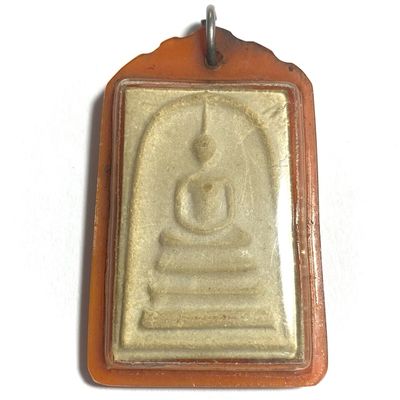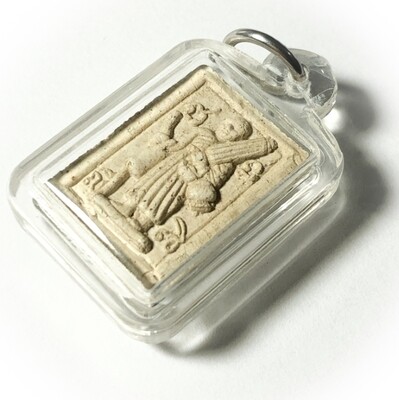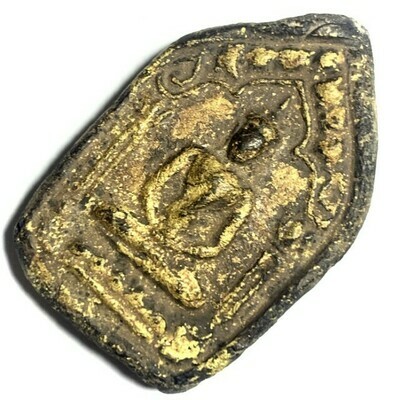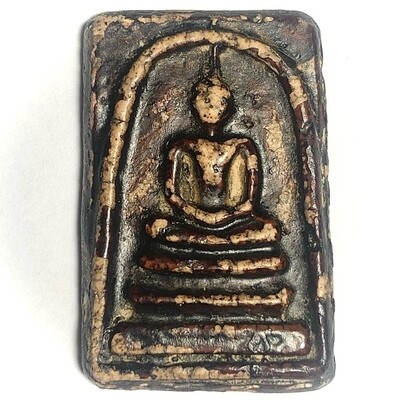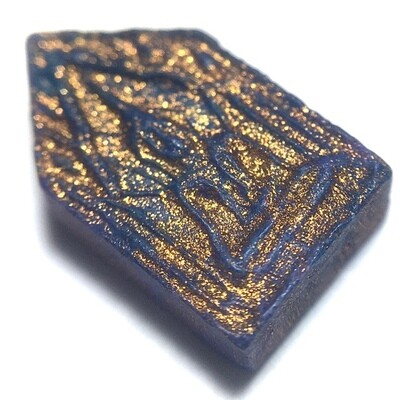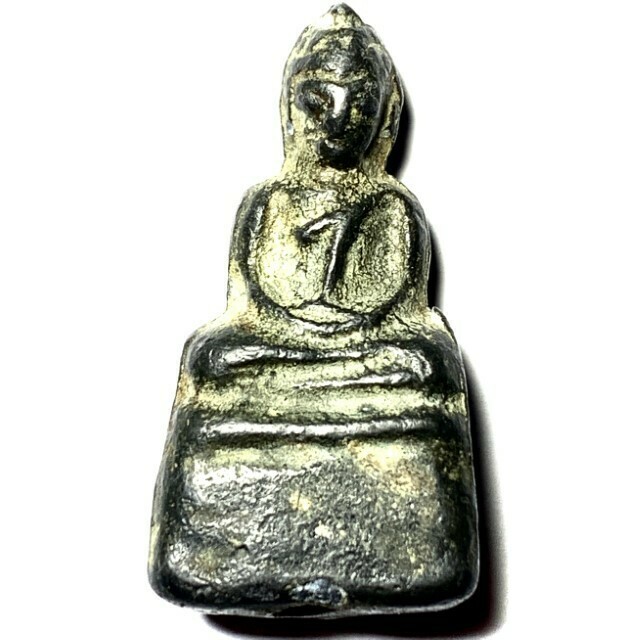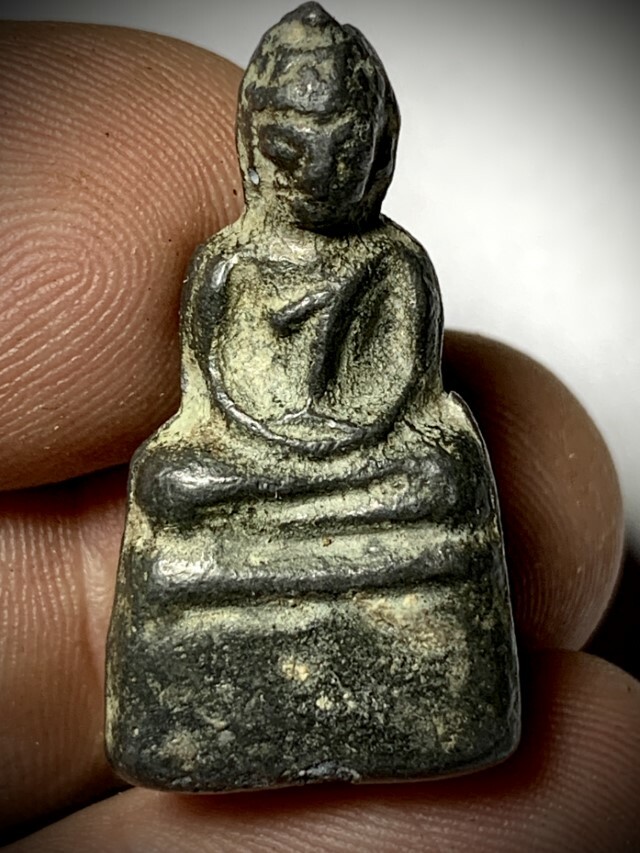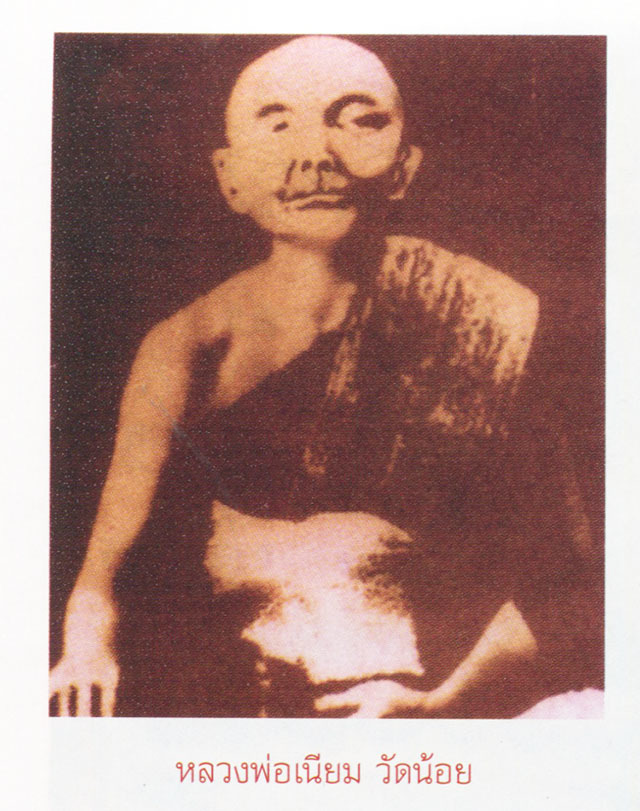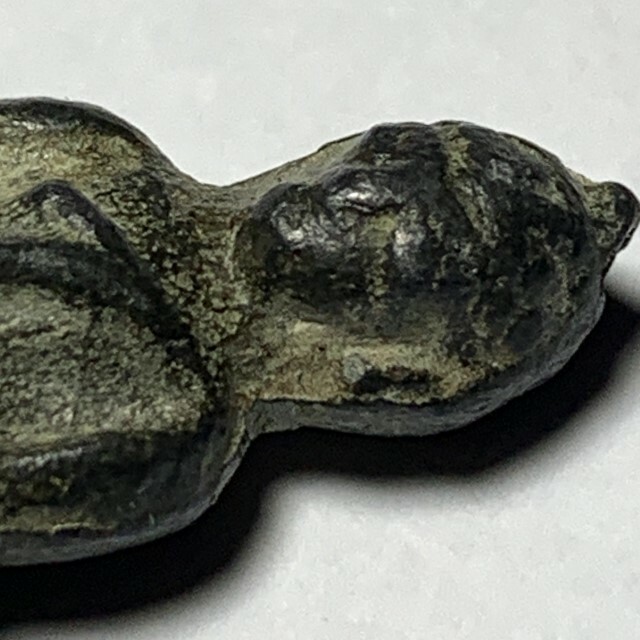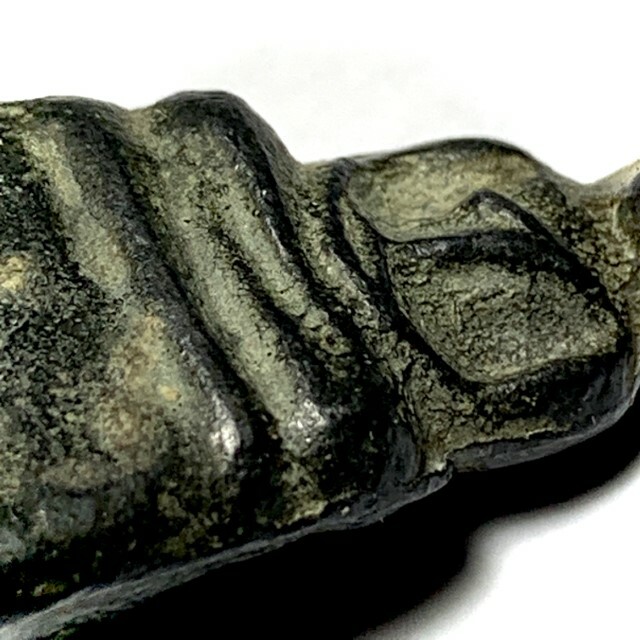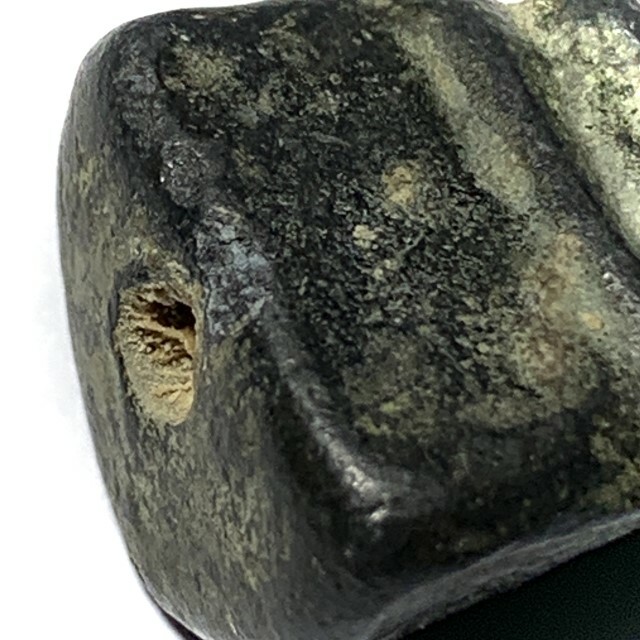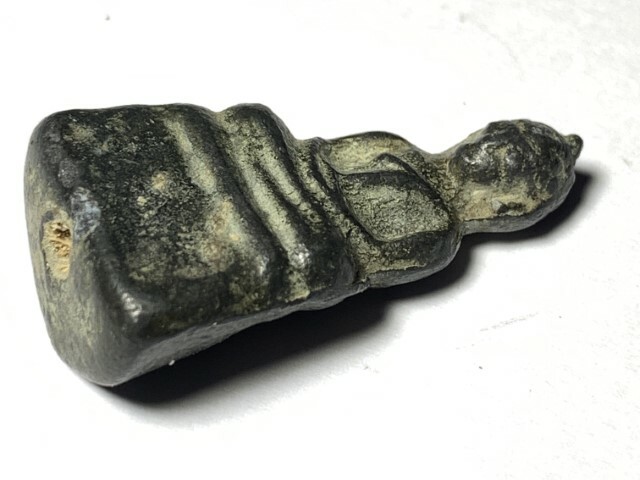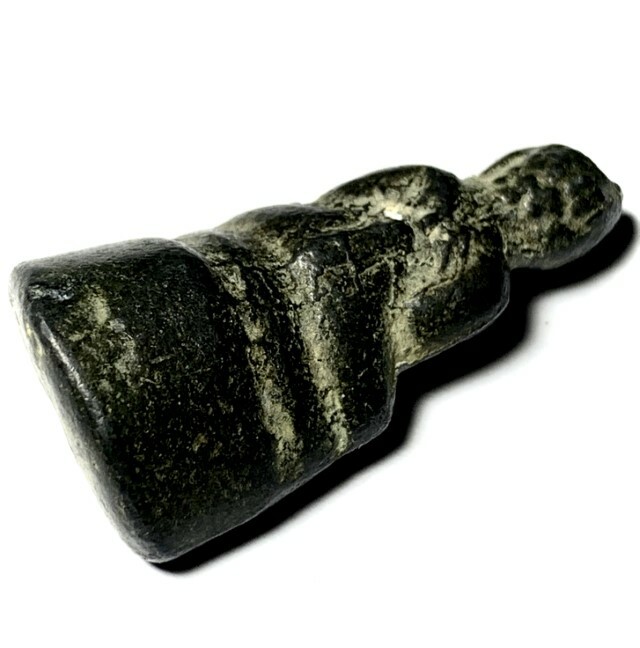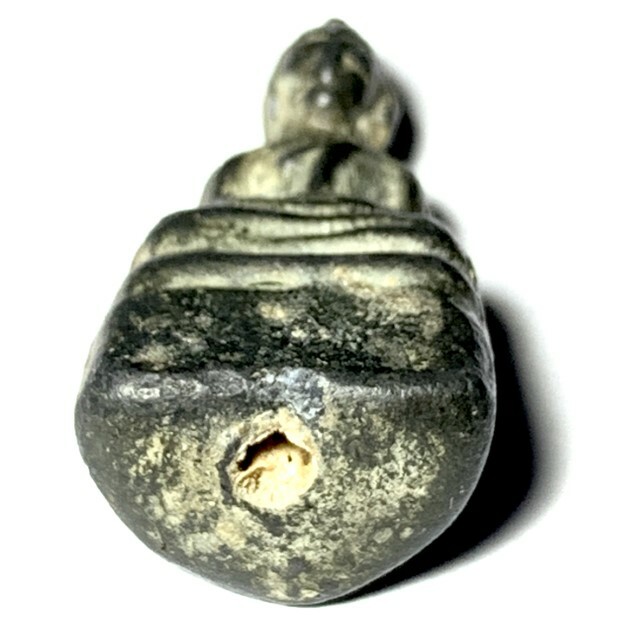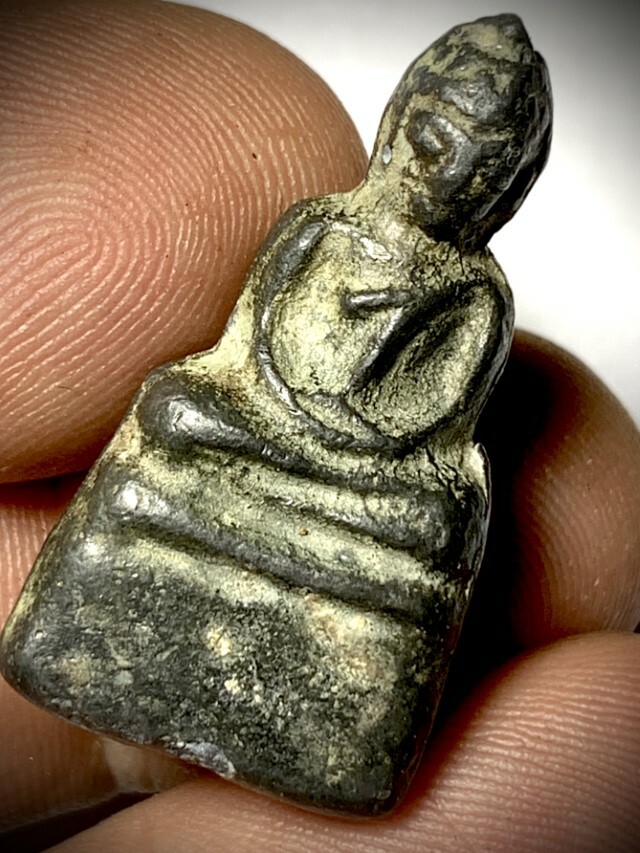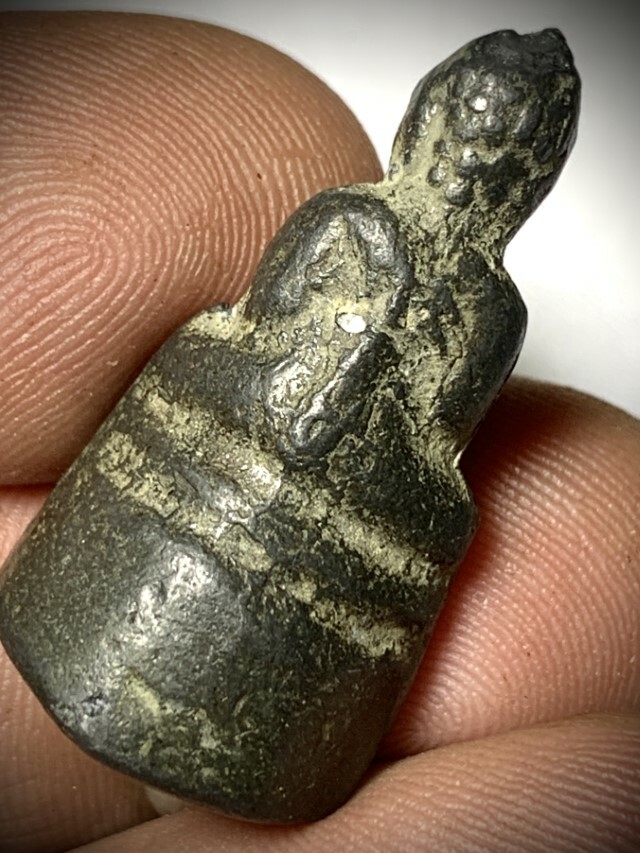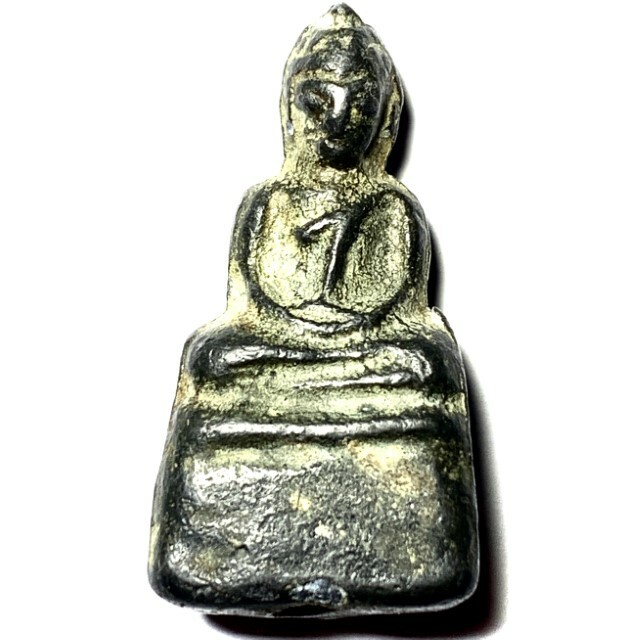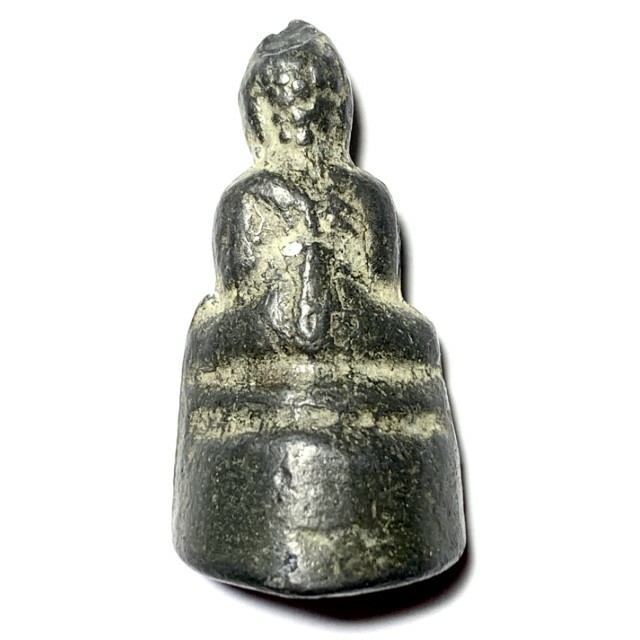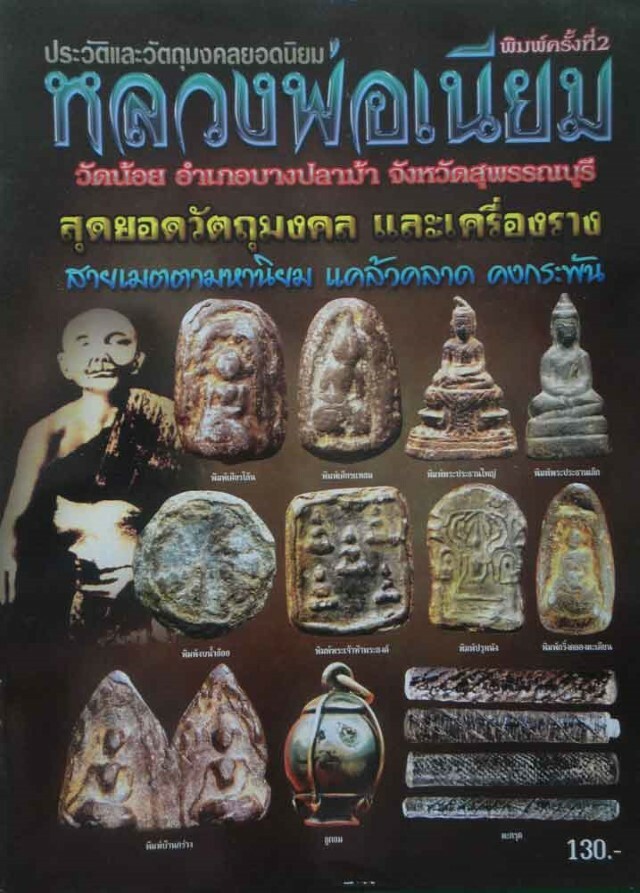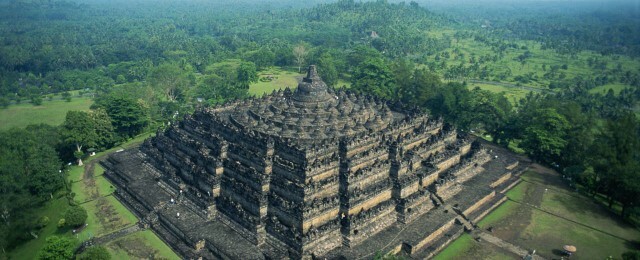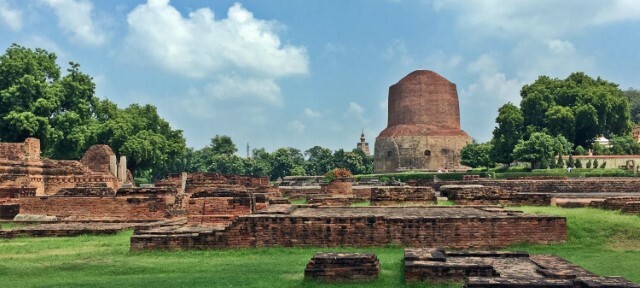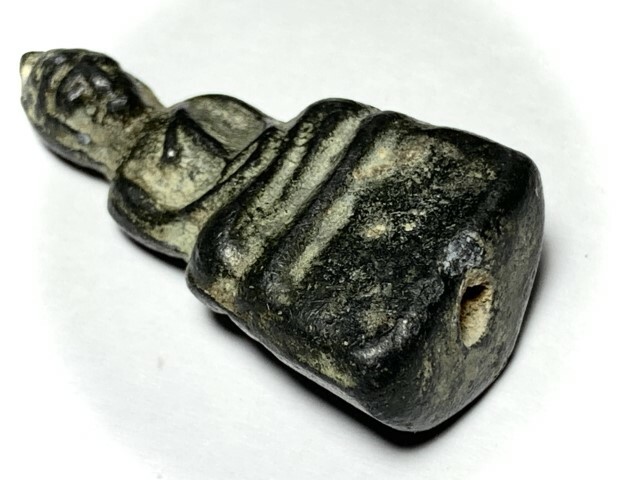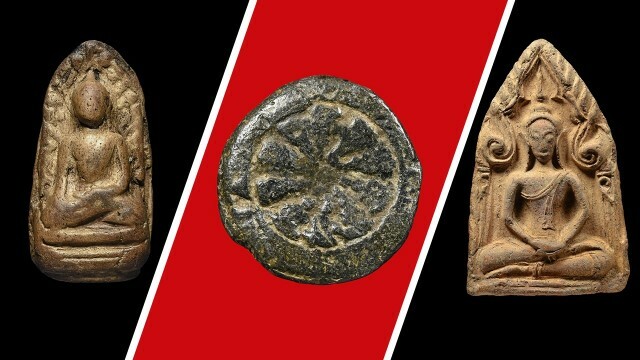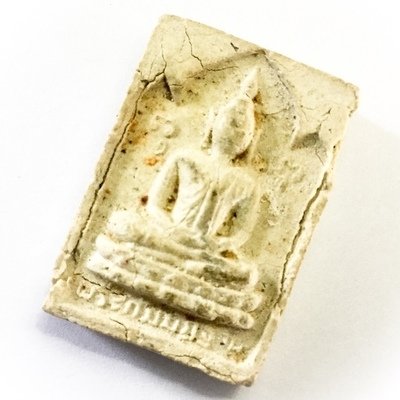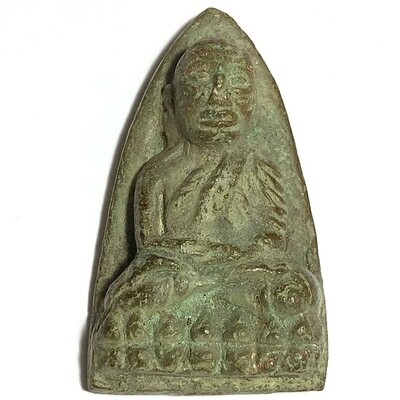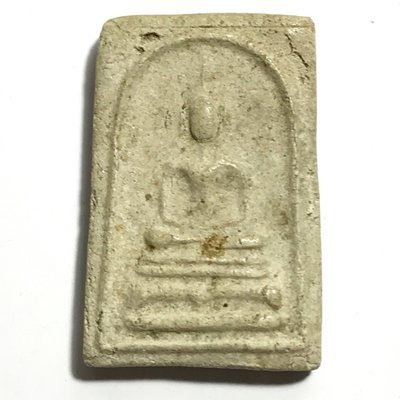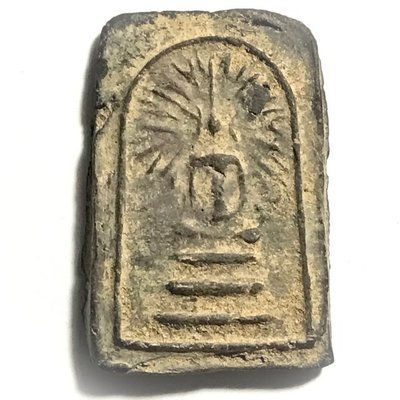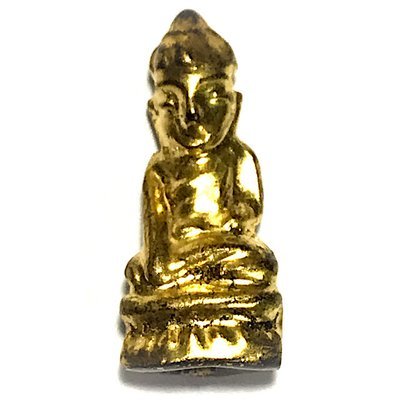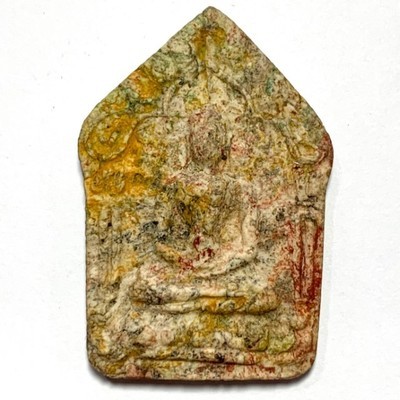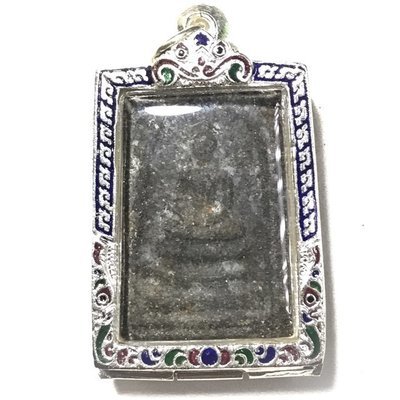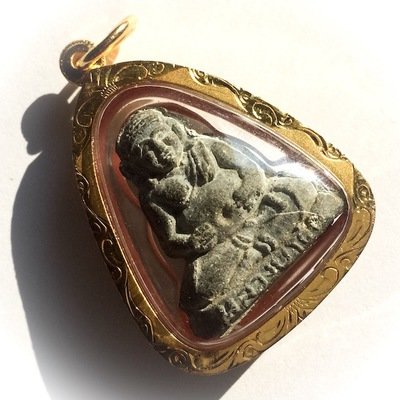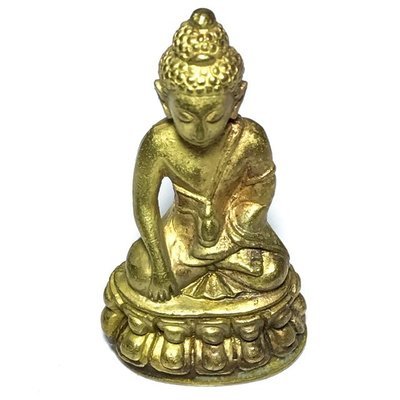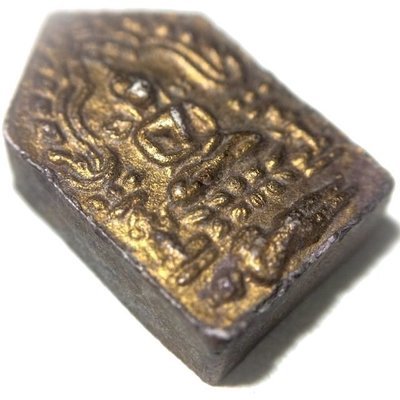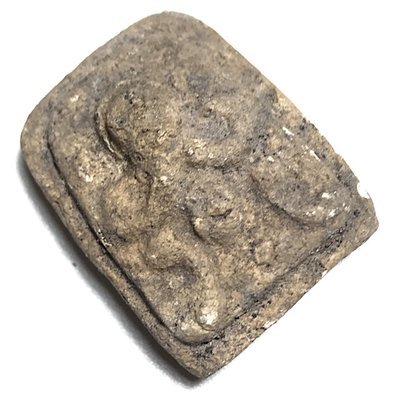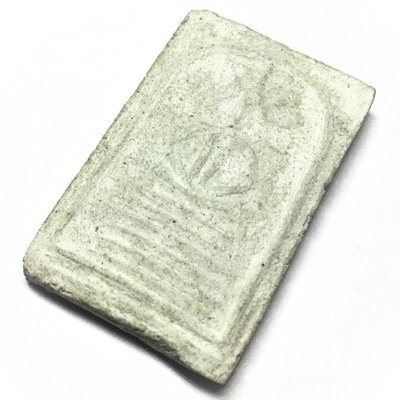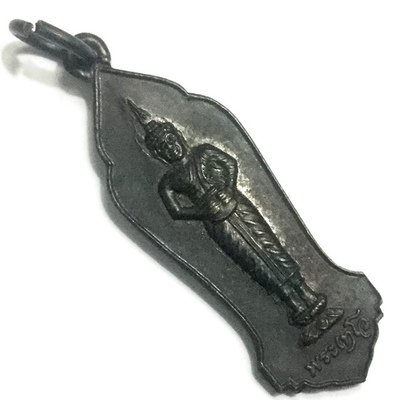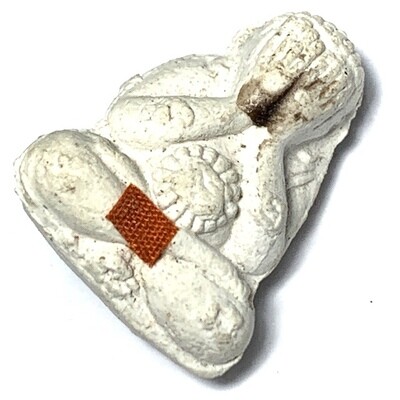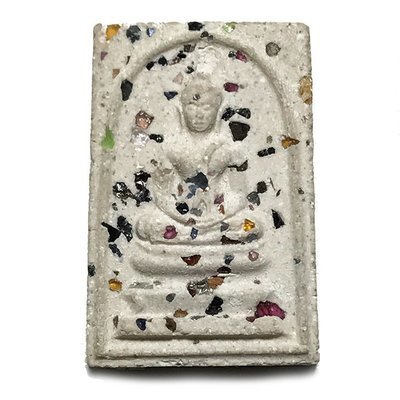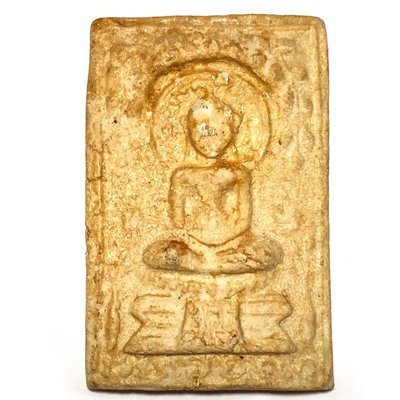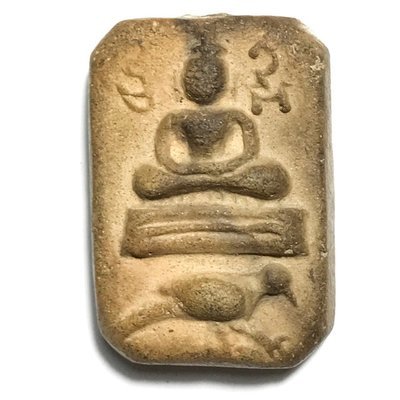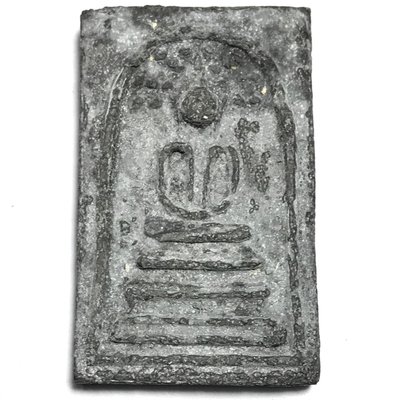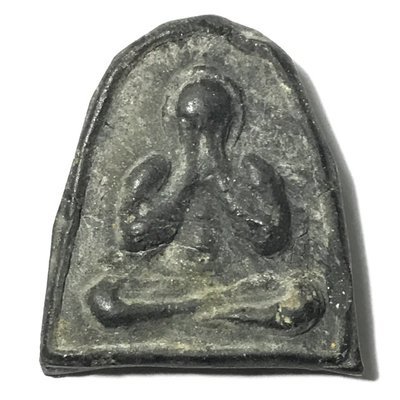
Ancient Amulet Store – Purveyors of preferred Classic Thai Buddhist Amulets for the True Devotee and Distinguished Collector
Discover the immensely deep and fascinating world of Vintage Thai Buddhist Amulets. Ancient Amulet is a long term established and internationally recognized Vintage Amulet Shop, and A Trusted Source for Classic Thai Buddhist Amulets for Devotees and Discerning Collectors, and is one of the many sub projects of informational sources created by Thai Amulet, Buddhism and Thai Occult Expert, Ajarn Spencer Littlewood . as part of his ‘Buddha Magic Project‘
Ancient Amulet provides authentic Antique and Rare Thai Amulets of the Pre and Early Post-Modern Era, of high esteem and Sacred Value, to revere, study and collect. Our Ancient Thai Buddhist Amulets are selected from the finest exhibits we can discover, and given diligent study and authentication processes. Our collection showcases time-honored amulets crafted by ancient masters, boasting captivating qualities and representing the esteemed Pra Niyom class. We offer authentic, highly valued ancient Thai Buddhist amulets from the pre and early post-modern eras, carefully selected from the finest exhibits and thoroughly examined. We invite you to study, revere, and collect these classic amulets from ancient masters, and to learn about their magical aspects and the art of amulet evaluation
Pra Lor Nuea Chin Takua Pim Pra Pratan Klang Fang Takrut Niyom LP Niam Wat Noi Free Casing & Express shipping
A very rare model to encounter amongst the many models made by Luang Por Niam, of Wat Noi, is the Pra Pim Pra Pratan Klang Ongk Kroo Fang Takrut Ud Pong, in Nuea Chin Takua Sanim Khiaw, Sacred Alchemical Metal Artifact alloy (with green malachite Kraap Kru), especially preferred as being an original version made and empowered by LP Niam at Wat Noi, which holds a higher status with collectors to those of the Kru Wat Suwan Hiding Place Find amulet blessing and series he made (which are in truth, one and the same and of equal value, and only differ academically, but otherwise, are equal to each other).
Luang Por Niam was the number one Kroo Ba Ajarn and Ordaining Officer of the great Master Monk Luang Por Parn of Wat Bang Nom Kho, who was witnessed to have died in complete happiness and relaxation, in meditative bliss, as an attained ascended Master. For this reason, Luang Por Noi has many faithful devotees around the world, who worship him and his teachings, and revere his attainments, and wish to wear one of his blessed amulet.
Luang Por Parn is worshiped as one of the Top 10 Greatest Guru Monks of present-day in Thailand & many worshippers all around the world. He was the closest disciple of Luang Por Niam
Luang por Niam, was responsible for blessing the many amulets found in the Kru Wat Suwan in Ang Tong, and added his own amulets from Wat Noi,, which are despite being the same amulets, received a second blessing (making their slightly cheaper price hard to understand). The two different releases are easily and visibly different, due to the surface effects from being hidden within a Kru Chamber.. This exhibit of the Pra Sangkajjai is evidently a direct release from Wat Noi, due to the slightly greenish-black tone, with white Kraap mildew, whereas the exhibit which he buried at Wat Suwan.
The Pra Gru Wat Suwan Series
The natural appearance of an authentic Pra Kru Wat Suwan leaden amulets, is that they have a fine layer of Kraap Kru arising on portios ofthe surface, showing red rust from oxidisation. It is also important to note that the Pra Kru Wat Suwan amulets did not have their edges filed off into perfect frames, and have rough unfiled edges because of this factor. This is one of the first things to look for when collecting authentic Pra Kru Wat Suwan artifacts.
According to historical records, the great master Monk of Wat Noi in Supannburi, Luang Por Niam, was invited to assist in the making, casting, and empowerment of the additional amulets which were being made. This makes the ra Kru Wat Suwan enter into the Pantheon of aficionados of this Monk and his Amulets, and their popularity has become ever more legendary, to the point where the Pra Kru Wat Suwan is now a piece of National Historical Heritage.
The age of the ancient burial find models ranges up to 700 years to 1000 years old, and the edition added by Luang Por Noi is dated around the Mid-Ratanakkosin Era, making them past the Centenarian level (more than a Century Old).
Many different Pim (models) of amulets were found in lesser and greater numbers, all differing slightly, due to the ancient casting methods used during olden days, making it impossible to make thousands of identical amulets as seen in the modern era, with modern block press engineering technology. The amulets were cast from ancient mercurial leaden sacred alloy, & also were found in reddish baked Eearthen sacred clay. The amulets exist in many forms;
Such as the Pra Upakut, Pra Sangkajjai, Pra Rod Lampun, Pra Ruang Rang Pern, Pra Lila Laweng, Pra Lila Kampaeng Gaew walking Buddha votive tablets, Pra Pratummaas, Pra Supann Hlang Pra,Pra Mahesworn Nuea Chin Ngern silver leaden amulets, Pra Pong Supan Benjapakee amulets, identical to those found at the Kru Wat Pra Sri Mahatat find, Pra Lor Pim Pra Pratan Buddha Immages (in small and large sizes), and Pra Paruhnang Loi Ongk Buddha statuette amulets, Pra Pim Mokkhala Saribut (Maugdalyayana and Saributra) Buddha amulet, the Pra Tham Suea Ruesi Amulet in both Pim Hnaa Gae and Pim Hnaa Ruesi, Pra Kum Nakorn Khosa, Pra Pim Wat Rachadesa, Pra Put Pim Siarn Hlaem pointed head Buddha votive tablet in leaden alloy, The Pra Kong Lampun Benjapakee amulet, all versions of the Khun Phaen Ban Krang earthen amulets in all models, such as the Pim Khaen Orn, Pim Bai Mayom, Pim Pra Pratan, Pim Lueay, Pim Song Pon Yai, Pim Plai Dtat Diaw, Pim Plai Koo, Khun Phaen Pim Pha Seek, and so on.
Pra Sangkajjai
He has a golden tinted skin complexion, and was originally so similar in appearance and stature to the Lord Buddha, that sometimes people would mistake him for the Buddha if seen from a distance. For this reason, he used his mind powers to force his body to grow fatter and not so handsome as before, in order to not confuse others if he was the Buddha or not.
The ancient masters would often use the visual symbolism of Pra Sangkajjai’s features to create statues in this image, which has served as an important preserver of the Faith over the Centuries, and a very old form of Buddha image dating back to the early times of Buddhism.
Pra Maha Sangkajjai was originally called ‘Ganjana’, which means ‘Gold’ in Pali. He was the son of a Brahman called Bpurohidtgajjayana Kodtra in the City of Usenni He studied and completed the Traiwaet (Tri Veda). After his father passed away, he inherited the title of Bpurohidt (advisor to the King). This happened in the time of the King Jantabajjodti Pra Sangkajjai had 7 close companions who cam,e with himn to attend the Buddhas teachings at Wat Weluwanaram, and after listening to the Dhamma, becamse Arahants instantly and asked to ordain. In the Turasutra it is mentioned that Pra Sangkajjai lived to the age of 120 years old.
The True Understanding of Prayer to Buddha Image Amulets.
Although it is customary amongst Buddhists to keep Buddha images and to pay their respects to the Buddha, Buddhists are not idol worshippers. Idolatry generally means erecting images of unknown gods and goddesses in various shapes and sizes and to pray directly to these images. The prayers are a request to the gods for guidance and protection. The gods and goddesses are asked to bestow health, wealth, property and to provide for various needs; they are asked to forgive transgressions. The 'worshipping' at the Buddha image is quite a different matter. Buddhists revere the image of the Buddha as a gesture to the greatest, wisest, most benevolent, compassionate and holy man who has ever lived in this world. It is a historical fact that this great man actually lived in this world and has done a great service to mankind.
The worship of the Buddha really means paying homage, veneration and devotion to Him and what He represents, and not to the stone or metal figure. The image is a visual aid that helps one to recall the Buddha in the mind and to remember His great qualities which inspired millions of people from generation to generation throughout the civilized world. Buddhists use the statue as a symbol and as an object of concentration to gain a peace of mind. When Buddhists look upon the image of the Buddha, they put aside thoughts of strife and think only of peace, serenity, calmness and tranquillity. The statue enables the mind to recall this great man and inspires devotees to follow His example and instructions.
In their mind, the devout Buddhists feel the living presence of the Master. This feeling makes their act of worship become vivid and significant. The serenity of the Buddha image influences and inspires them to observe the right path of conduct and thought. An understanding Buddhist never asks favors from the image nor does he request forgiveness for evil deeds committed. An understanding Buddhist tries to control his mind, to follow the Buddha's advice, to get rid of worldly miseries and to find his salvation. Those who criticize Buddhists for practicing idol worship are really misinterpreting what Buddhists do. If people can keep the photographs of their parents and grandparents to cherish in their memory, if people can keep the photographs of kings, queens, prime ministers, great heroes, philosophers, and poets, there is certainly no reason why Buddhists cannot keep their beloved Master's picture or image to remember and respect Him. What harm is there if people recite some verses praising the great qualities of their Master? If people can lay wreaths on the graves of beloved ones to express their gratitude, what harm is there is Buddhists too offer some flowers, joss-sticks, incense, etc., to their beloved Teacher who devoted His life to help suffering humanity? People make statues of certain conquering heroes who were in fact murderers and who were responsible for the death of millions of innocent people. For the sake of power, these conquerors committed murder with hatred, cruelty and greed. They invaded poor countries and created untold suffering by taking away lands and properties of others, and causing much destruction.
Many of these conquerors are regarded as national heroes; memorial services are conducted for them and flowers are offered on their graves and tombs. What is wrong then, if Buddhists pay their respects to their world honored Teacher who sacrificed His worldly pleasures for the sake of Enlightenment to show others the Path of Salvation? Images are the language of the subconscious. Therefore, the image of the Enlightened One is often created within one's mind as the embodiment of perfection, the image will deeply penetrate into the subconscious mind and (if it is sufficiently strong enough)can act as an automatic brake against impulses. The recollection of the Buddha produces joy, invigorate the mind and elevates man from states of restlessness, tension and frustration. Thus the worship of the Buddha is not a prayer in its usual sense but a meditation. Therefore, it is not idol worship, but 'ideal' worship. Thus Buddhists can find fresh strength to build a shrine of their lives. They cleanse their hearts until they feel worthy to bear the image in their innermost shrine. Buddhists pay respects to the great person who is represented by the image.
They try to gain inspiration from His Noble personality and emulate Him. Buddhists do not see the Buddha image as a dead idol of wood or metal or clay. The image represents something vibrant to those who understand and are purified in thought, word and deed. The Buddha images are nothing more than symbolic representations of His great qualities. It is not unnatural that the deep respect for the Buddha should be expressed in some of the finest and most beautiful forms of art and sculpture the world has ever known. It is difficult to understand why some people look down on those who pay respect to images which represent holy religious teachers. The calm and serene image of the Buddha has been a common concept of ideal beauty. The Buddha's image is the most precious, common asset of Asian cultures.
Without the image of the Buddha, where can we find a serene, radiant and spiritually emancipated personality? But the image of the Buddha is appreciated not only by Asian or Buddhists. Anatole France in his autobiography writes, 'On the first of May, 1890, chance led me to visit the Museum in Paris. There standing in the silence and simplicity of the gods of Asia, my eyes fell on the statue of the Buddha who beckoned to suffering humanity to develop understanding and compassion. If ever a god walked on this earth, I felt here was He. I felt like kneeling down to Him and praying to Him as to a God. Once a general left an image of the Buddha as a legacy to Winston Churchill. The general said, 'if ever your mind gets perturbed and perplexed,
I want you to see this image and be comforted.' What is it that makes the message of the Buddha so attractive to people who have cultivated their intellect? Perhaps the answer can be seen in the serenity of the image of the Buddha. Not only in color and line did men express their faith in the Buddha and the graciousness of His Teaching. Human hands wrought in metal and stone to produce the Buddha image that is one of the greatest creations of the human genius. Witness the famous image in the Abhayagiri Vihara in Sri Lanka, or the Buddha image of Sarnath or the celebrated images of Borobudur.
Below; Borobudur
The eyes are full of compassion and the hands express fearlessness, or goodwill and blessings, or they unravel some thread of thought or call the earth to witness His great search for Truth. Wherever the Dhamma went, the image of the great Teacher went with it, not only as an object of worship but also as an object of meditation and reverence. 'I known nothing, 'says Keyserling,' more grand in this world than the figure of the Buddha. It is an absolutely perfect embodiment of spirituality in the visible domain.' A life so beautiful, a heart so pure and kind, a mind so deep and enlightened, a personality so inspiring and selfless -- such a perfect life, such a compassionate heart, such a calm mind, such a serene personality is really worthy of respect, worthy of honor and worthy of offering. The Buddha is the highest perfection of mankind. The Buddha image is the symbol, not of a person, but of Buddhahood -- that to which all men can attain though few do. Source :budsas.org
Below; Sarnath
For Buddhahood is not for one but for many: 'The Buddhas of the past ages, the Buddhas that are yet to come, the Buddha of the present age; humbly I each day adore.' However, it is not compulsory for every Buddhist to have a Buddha image to practise Buddhism. Those who can control their mind and the senses, can certainly do so without an image as an object. If Buddhists truly wish to behold the Buddha in all the majestic splendor and beauty of His ideal presence, they must translate His Teachings into practice in their daily lives. It is in the practice of His Teachings that they can come closer to Him and feel the wonderful radiance of His undying wisdom and compassion. Simply respecting the images without following His Sublime Teachings is not the way to find salvation. We must also endeavor to understand the spirit of the Buddha. His Teaching is the only way to save this troubled world. In spite of the tremendous advantages of science and technology, people in the world today are filled with fear, anxiety and despair. The answer to our troubled world is found in the Teaching of the Buddha.
